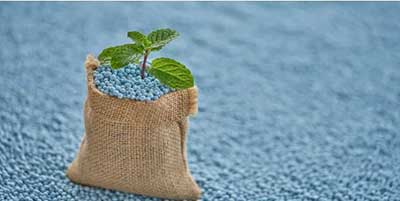Date: 13/12/2022
Relevance: GS-2: Issues related to direct and indirect farm subsidies and minimum support prices.
Key Phrases: Russia-Ukraine War, Fertiliser Consumption, Kharif Season, Soil Health, NPKS, Use Ratio, Subsidy, DAP.
Why in News?
- Fertiliser consumption in India, already imbalanced, became more uneven this Kharif season because of the Russia-Ukraine war.
Context:
- The NPK use ratio (ideal at 4.3:2) got distorted to 8.2:3.2. This could have an adverse impact on soil health in the long run.
- There was a 39 percent decline in sales of Muriate of Potash (MoP) during April- October as compared to the pre COVID period of 2021.
- Even compared to April October 2021, the sales of MoP for direct application dropped by almost 48 per cent.
- Farmers ignored this vital crop nutrient in favour of urea, diammonia phosphate and NPKS (Sodium, Phosphorus, Potassium, and Sulphur). This is because of high prices induced by the Ukraine-Russia War.
- Russia and Ukraine account for almost 40 per cent of global potash production
Key Highlights:
- The ideal average NPK ratio for the country is 4:2:1.
- As per the Industry players, India's distorted fertiliser consumption (NPK use ratio) had worsened in Kharif 2022 to 12.8:5.1: 1 as against 6.8:2.7: 1 in Kharif 2021.
- The consumption of potash has been severely impacted which in turn has further imbalanced the already bad NPK use ratio.
What are the reasons behind the distortion in fertiliser consumption?
- Reduction in sales of potash: The distortion happened mainly because of a steep reduction in sales of potash (almost 45 percent), a drop from 1.4 MT in Kharif 2021 to 770,000 tonnes for Kharif 2022.
- Sharp spike in rates of MoP: The retail price of Muriate of Potash (MoP) which is imported almost in entirety, shot up in international markets after the war broke out, leading to supply disruptions. The prices have been higher than that of DAP in recent months severely impacting the consumption of potash.
- Low government subsidy on potash: The government's subsidy on potash has been low as compared to nitrogen and phosphorus. Due to this importing companies had to pass on the impact of the entire global price hike to farmers, leading to a slump in sales.
Do You Know?
- The difference between the delivered cost of fertilizers at farm gate and net market realization by the urea units is given as a subsidy to the urea manufacturer/importer by the Government of India.
- Government of India decontrolled Phosphatic and Potassic (P&K) fertilizers with effect from 25th August 1992.
- Consequent upon the decontrol, the prices of the Phosphatic & Potassic fertilizers registered a sharp increase in the market, which exercised an adverse impact on the demand and consumption of the same.
- It led to an imbalance in the usage of the nutrients of N, P & K (Nitrogen, Phosphate and Potash) and the productivity of the soil.
- Thus, nutrient based subsidy scheme was introduced.
Nutrient Based Subsidy Scheme:
- Under the scheme, the subsidy on Phosphatic and Potassic (P&K) fertilizers is announced by the Government on an annual basis for each nutrient on a per kg basis.
- A fixed amount of subsidy decided on an annual basis, is provided on each grade of subsidized Phosphatic and Potassic (P&K) fertilizers depending upon its nutrient content.
- This subsidy is given by the Government of India to the P&K fertilizer companies which are therefore able to provide P&K fertilizers to the farmers at a subsidized MRP, which is lower than it would have been.
What is being done to Increase Imports?
- India’s demand for 30 lakh tonnes of potash per year is met with imports from Belarus and Russia.
- The war has forced countries like India, which use fertilisers containing potash, phosphate and nitrogen, to now look for other suppliers.
- India is boosting fertiliser imports from nations including Canada, US and Israel to ensure sufficient supplies.
- Saudi Arabia, Morocco and China had been major suppliers of phosphate in the past but China has already restricted DAP (diammonium phosphate) exports.
- So, India has reached out to Morocco along with Saudi Arabia and Jordan.
Present Scenario:
- At present, DAP is selling at around ₹ 27,000 per tonne while MoP is quoting at around ₹ 35,000 per tonne, which ideally should be the other way round,”
- One way to correct this imbalance is to bring the per kilogram subsidy on potash on a par with phosphorus, which will cool retail prices.
- The government in its last revision of non-urea fertiliser subsidies reduced the subvention for potash from ₹ 25.31 per kg fixed in April to ₹ 23.65 per kg in October.
Way Forward:
- Fertiliser industry needs to be made self-reliant and not depend
on import of fertilizers in order to escape the vagaries of high volatility
in international prices.
- In this direction, five urea plants at Gorakhpur, Sindri, Barauni, Talcher and Ramagundam are being revived in the public sector.
- The NBS model needs to be extended to urea and allow for price rationalization of urea compared to non-nitrogenous fertilizers and prices of crops.
- Also, alternative sources of nutrition for plants need to be developed. There should be a shift towards the use of non-chemical fertilizers as well as a demand for bringing parity in prices and subsidies given to chemical fertilizers with organic and bio fertilizers.
- Finally, India should pay attention to improving fertilizer efficiency through need-based use rather than broadcasting fertilizer in the field.
- The recently developed Nano urea by IFFCO shows promising results in reducing the usage of urea. Such products should be encouraged.
Source: Business Standard
Mains Question:
Q. How has the Russian war worsened India's fertiliser consumption balance? How can India come out of this problem? Analyze?







